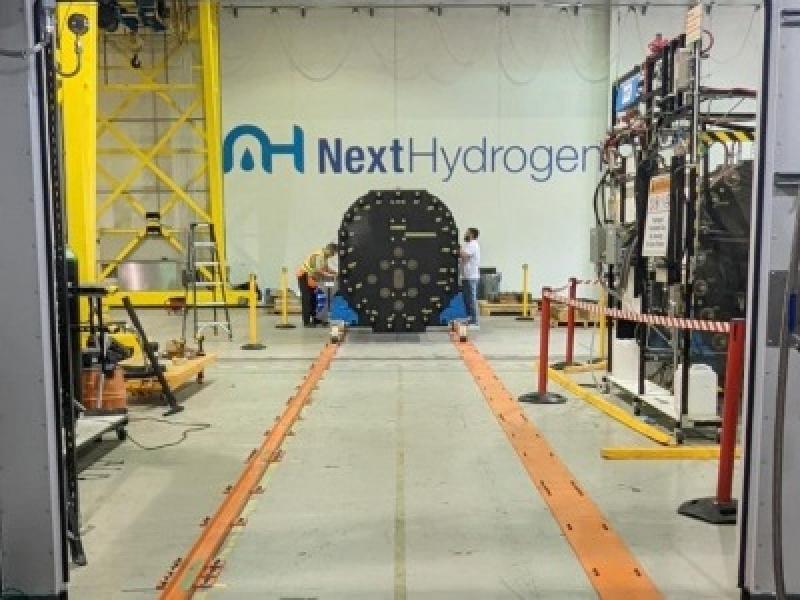
As innovators around the world scramble to invent and commercialize low-carbon building materials, Ryan McClanaghan, an architect and associate at DIALOG, believes a potential solution surrounds us in the soil, trees and fields.
Drawing upon the bioregional design concept he grasped from his travels in Europe (funded by a grant he earned as the winner of DIALOG’s Iris Prize in 2023), he conceives of a future where the Canadian construction industry can tap into the local environment for wood, clay and straw to create more sustainable building materials.
An ancient idea dating back to our ancestors, McClanaghan said sourcing bioregional materials is simply people drawing from what is around them, rather than relying on complex supply chains of carbon-intensive steel and concrete.
He developed a prototype exterior wall and floor made out of timber, wood-fibre, cellulose and earth. It would generate only a third of the embodied carbon compared to a traditional steel stud wall, and provide a 20 per cent improvement on thermal performance.
While only a prototype and not intended to be used in a building, McClanaghan hopes the idea will evolve into “understanding the relationship of the materials that we choose and the sustainability impact,” he said in an interview with Sustainable Biz Canada.
“I want our built environment to be more sustainable, reflect more closely the places where we live and where the projects are situated, and support the ingenuity and technology and economy of Canada to produce amazing, beautiful things here.”
Learning from Europe
Based in Vancouver, McClanaghan’s interest in bioregionalism was sparked from a formative work term in Germany with a sustainable design studio while studying for his master’s degree.
“They were quite early adopters in terms of sustainable thinking,” he said, “and expanding that from not just performance of buildings for like operations, but also to what we put in buildings in terms of materials and construction.”
Returning to Canada and joining DIALOG, an architecture firm with offices across the country, he specialized in mass timber construction, a type of engineered wood that traps carbon. He was the project designer of 2150 Keith Dr., a 10-storey mass timber office building under construction in Vancouver.
After years of experience with mass timber, he considered how to complement the material. The bioregional framework that is inspired by and uses the local geography and flora was an exciting opportunity from a design perspective, McClanaghan said, a way to deeply connect a building with the local environment.
Though it sounds primitive, McClanaghan said it can be scaled-up using factories. Canadian mass timber companies already have their own forestry lots and mills close to their manufacturing sites, as an example.
If widely accepted, it would mean an abundant, local supply of low-carbon building materials that could help the buildings sector address its environmental impact while reducing transportation emissions. He expects bioregional materials will be applicable to most building types.
How bioregionalism could take root in Canada

To conduct further research, he submitted an application to DIALOG’S 2023 Iris Prize, its internal scholarship. Employees can present an innovative concept, and if selected, receive two weeks of paid time off and up to $8,000 to explore an area of professional interest.
McClanaghan won, and used the time and money to return to Europe so he could learn under the experts and companies pioneering bioregional material design in Germany, Switzerland and Belgium.
The countries "felt climatically, politically, economically closest to Canada in a lot of ways,” he said, but also years ahead of his home country. They could provide a model for Canada.
He saw professionals searching for low-carbon materials by reviving traditional crafts, such as roofs made from thatch in Denmark, but modernized with contemporary science and technology.
Another was ground earth construction, which compresses and shapes soil into walls. In Brussels, tonnes of construction waste was being converted into blocks, walls and bricks, diverting waste and carbon.
Once back in Canada, he synthesized the experience by creating a demonstration: the wall and floor assembly.
Made from materials abundant in British Columbia, it was designed to:
- identify production gaps;
- understand the carbon and thermal performance; and
- see how it would fit under building code and performance requirements for larger buildings in Canada.
As bioregional materials are limited by building codes and fire safety regulations, McClanaghan said mass adoption will demand further testing and conversations with all levels of government.
He hopes for a mainstreaming of bioregional design and production in Canada, aided by steps such as figuring out the materials compatible with mass timber construction, to push sustainability further.
“I want to encourage more sustainable, green biomaterial production in Canada. I want to see a pathway, governmental and otherwise, to have those products incorporated and adopted into projects,” he said.










